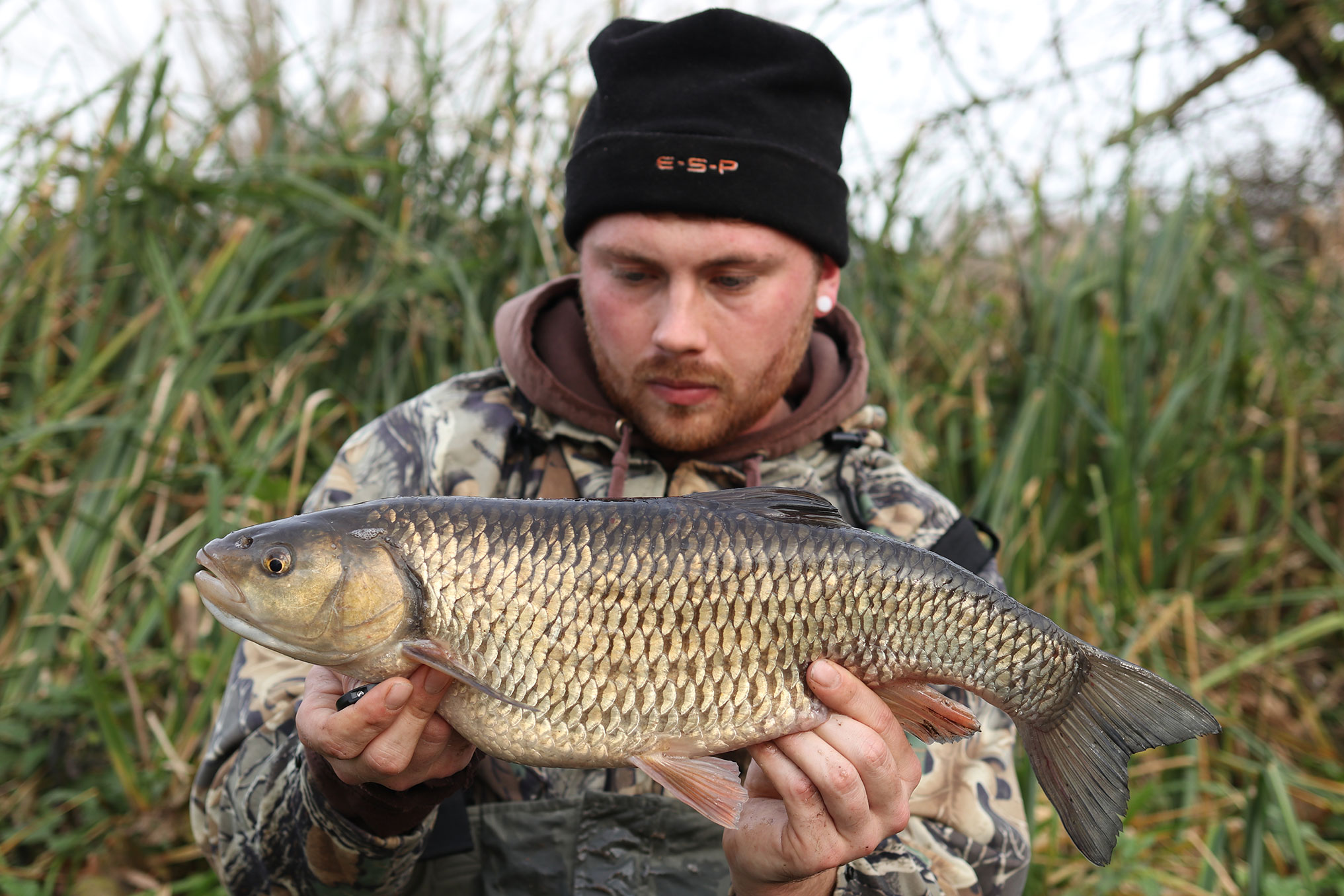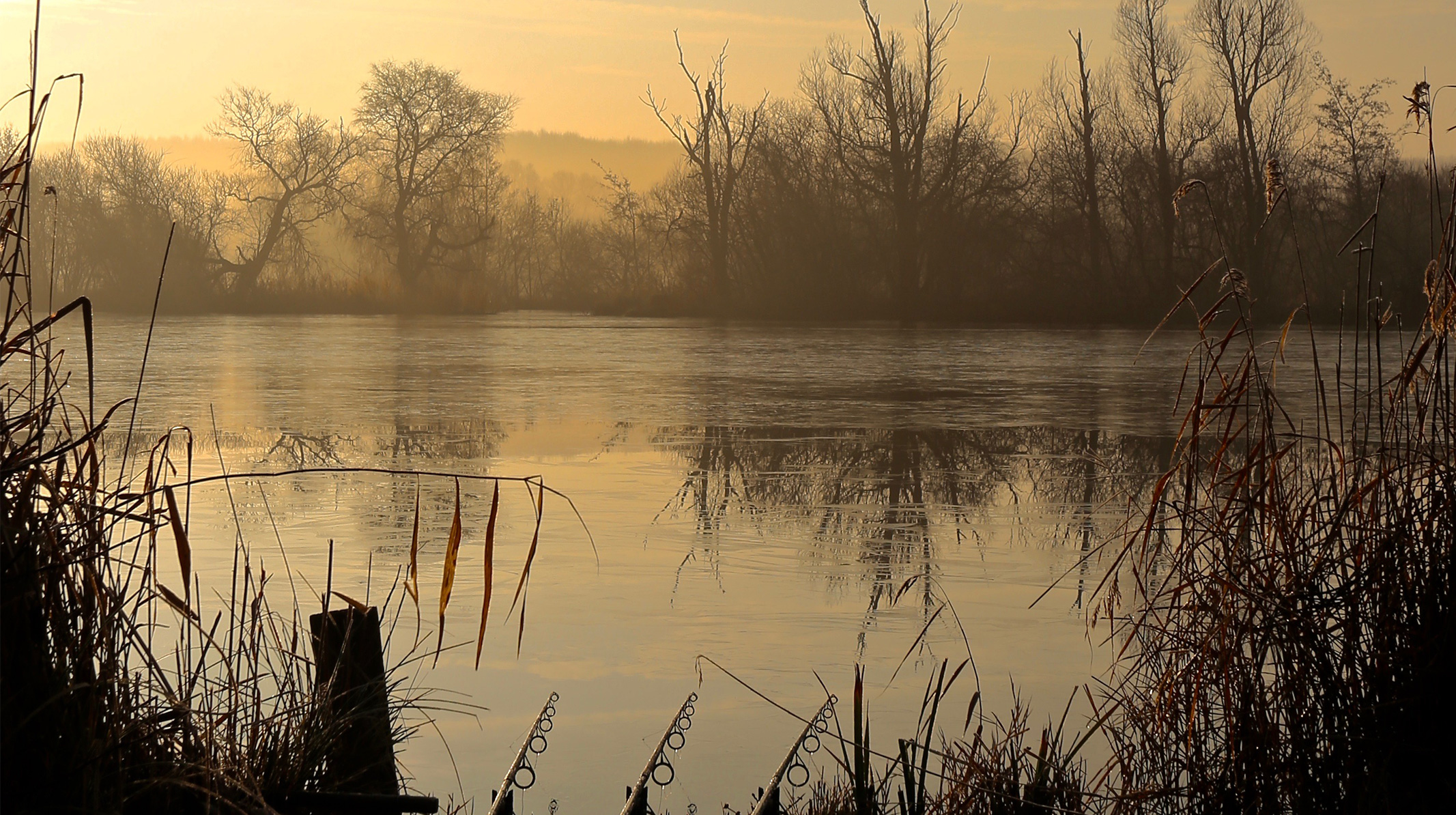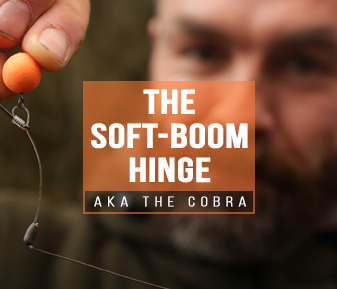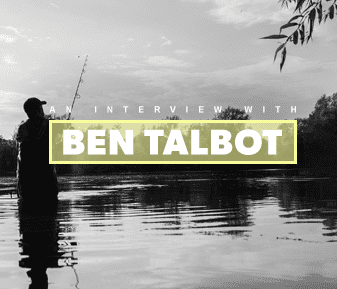Gaz Fareham explains why the Soft Boom Hinge aka 'The Cobra' is his go to rig - sharing his vast knowledge on the most effective set up to catch bites.
We ask James Timberlake - With winter upon us, how does your fishing change? Do you take full advantage of the quieter banks and stick it out for those target fish or maybe you opt for a change in venue and/or species to keep the bites coming.
How do your tactics differ from warmer times and what would your advice be for those braving the colder months?
The transition of autumn merging into Winter is without doubt one of my favourite periods of the year, for many reasons. Autumn for me is probably the most crucial period to be getting out on the bank and putting those rod hours in. I often use a lot of my precious holiday days through the months of September and October, trying to book Thursdays and Fridays off to create longer trips. This year for example on Dinton White Swan a lot of the bigger fish managed to avoid capture throughout the season which meant big hopes and high anticipation for those cooler autumn months when the water temperatures drop a few degrees and oxygen levels improve. With a lot of hard graft, determination and a large slice of luck I managed to catch a few good fish before what I class as the ‘shut down period’ started to commence.
My last bite from the lake came at the start of October and although this still sounds early in terms of autumn fishing the feeding had become very localised with short windows of activity, it was becoming clear the place was slowing down considerably. This shut down period doesn’t happen at the same time on every lake. I have fished a variety of different lakes over the years and have witnessed this happen a lot but at different times depending on the layout and structure of the lake. Unfortunately, the layout and format of White Swan all points to it shutting down a lot quicker than most venues. With it being very long, deep and not particularly wide, when we start to receive those freezing cold winds from the north it rips down the entire length of the pit and causes a very fierce undertow which in turn cools the bottom layers of the water column as well as the surface layers which I believe severely affects the fishing on there because the water becomes cold very quick. When it gets to this point I relish the thought of having a break, I could carry on plugging away but realistically I need to refresh myself, the last thing I want to be doing is just going for the sheer sake of it
and risk falling out of love with the place. That’s not to say fish won’t be caught because there still will be small windows of opportunity throughout the winter, but the signs will just be far fewer.
With carp now put at the back of my mind I can concentrate on what I am going to do next, where I’m going to angle and what for. I’m very lucky in where I live that I have been brought up fishing some of the very best rivers in the country from a very young age these being the beautiful River Test, Itchen, Hampshire Avon and Dorset Stour which hold a variety of different species of fish. I have always classed myself as a bit of an all-rounder and really enjoy targeting other species. I used to do a lot of carp fishing throughout the winter months when I was in my mid-teens but in more recent years I rarely do more than a couple of social trips with mates and now put my full attention into fishing the local rivers. The beauty of having the rivers so close by means I don’t have to drive miles and the sessions are usually short, spur of the moment trips where I quite often just drop in for an afternoon or early morning session.
The main species I find myself targeting are Grayling, Chub, Barbel, Roach and Perch. Fishing for each species offers its own unique set of challenges which keeps the fishing diverse, fresh and exciting. When it comes to picking what fish to angle for on the day, I let the weather decide that for me because each species feeds differently depending on the conditions. For example, Grayling feed best when the water clarity is at its clearest and feed a lot harder on bright sunny days in very cold weather. Whereas, Roach are more prone to getting caught when the rivers running with a touch of colour in low light conditions. So, based on the conditions I’m faced with I can pick what I fish for accordingly.
The transition of autumn merging into Winter is without doubt one of my favourite periods of the year, for many reasons. Autumn for me is probably the most crucial period to be getting out on the bank and putting those rod hours in. I often use a lot of my precious holiday days through the months of September and October, trying to book Thursdays and Fridays off to create longer trips. This year for example on Dinton White Swan a lot of the bigger fish managed to avoid capture throughout the season which meant big hopes and high anticipation for those cooler autumn months when the water temperatures drop a few degrees and oxygen levels improve. With a lot of hard graft, determination and a large slice of luck I managed to catch a few good fish before what I class as the ‘shut down period’ started to commence.
My last bite from the lake came at the start of October and although this still sounds early in terms of autumn fishing the feeding had become very localised with short windows of activity, it was becoming clear the place was slowing down considerably. This shut down period doesn’t happen at the same time on every lake. I have fished a variety of different lakes over the years and have witnessed this happen a lot but at different times depending on the layout and structure of the lake. Unfortunately, the layout and format of White Swan all points to it shutting down a lot quicker than most venues. With it being very long, deep and not particularly wide, when we start to receive those freezing cold winds from the north it rips down the entire length of the pit and causes a very fierce undertow which in turn cools the bottom layers of the water column as well as the surface layers which I believe severely affects the fishing on there because the water becomes cold very quick. When it gets to this point I relish the thought of having a break, I could carry on plugging away but realistically I need to refresh myself, the last thing I want to be doing is just going for the sheer sake of it and risk falling out of love with the place. That’s not to say fish won’t be caught because there still will be small windows of opportunity throughout the winter, but the signs will just be far fewer.
With carp now put at the back of my mind I can concentrate on what I am going to do next, where I’m going to angle and what for. I’m very lucky in where I live that I have been brought up fishing some of the very best rivers in the country from a very young age these being the beautiful River Test, Itchen, Hampshire Avon and Dorset Stour which hold a variety of different species of fish. I have always classed myself as a bit of an all-rounder and really enjoy targeting other species. I used to do a lot of carp fishing throughout the winter months when I was in my mid-teens but in more recent years I rarely do more than a couple of social trips with mates and now put my full attention into fishing the local rivers. The beauty of having the rivers so close by means I don’t have to drive miles and the sessions are usually short, spur of the moment trips where I quite often just drop in for an afternoon or early morning session.
The main species I find myself targeting are Grayling, Chub, Barbel, Roach and Perch. Fishing for each species offers its own unique set of challenges which keeps the fishing diverse, fresh and exciting. When it comes to picking what fish to angle for on the day, I let the weather decide that for me because each species feeds differently depending on the conditions. For example, Grayling feed best when the water clarity is at its clearest and feed a lot harder on bright sunny days in very cold weather. Whereas, Roach are more prone to getting caught when the rivers running with a touch of colour in low light conditions. So, based on the conditions I’m faced with I can pick what I fish for accordingly.

"I have always classed myself as a bit of an all-rounder and really enjoy targeting other species"
Kit wise I try and travel as light as possible because I’m often walking miles till I find a likely looking area or a good group of fish to fish for. I carry a small pouch of terminal tackle; swivels, shot, hook links etc., two small tupperware boxes of floats and feeders, scales, camera and unhooking mat all packs neatly into my rucksack. I always have a selection of different rods in my motor which are set up to cover all possible scenarios; light feeder rod, heavy feeder rod, barbel rod, 15ft float rod, 12ft float rod etc. it pays to keep organised when it comes to your kit and I make sure I lay everything out and check it all over at the start of the winter so I know I’ve got everything ready and in place for the season ahead.
Each year I set myself targets of what I want to achieve, usually it’s the weight of a certain species or sometimes it’s having a go for a species I’ve never caught before. For example, this year I want to catch a very big Grayling, hopefully one over three pounds but I also want to have a good crack at targeting Pike because it’s something I haven’t done a great deal of in recent years. Setting these little goals helps me to stay sharp and focused very much like the carp fishing where I might be after a few carp or one big fish, it’s a good thing to set yourself these end goals.
When it comes to the actual approach of fishing for these smaller species it really isn’t too dissimilar from the carp fishing. Obviously making sure you are on the fish is the most important bit and this is done by either spotting the fish with a good pair of polaroid glasses if the water clarity allows or by searching out likely looking features that you think will hold fish, this maybe eddy’s, sweeping bends, slacks, sunken snags etc. Having balanced tackle is also paramount, fish like Roach, Dace and Grayling have small mouths so small hooks and thin diameter lines are crucial. Soft rods are also a must as it’s very easy to pull the hook from their delicate mouths. Bait and bait application are also very important, knowing what bait to use and how to feed it correctly can be the difference between catching and not catching. There is a lot to be learnt from targeting other species and I really do believe it makes you a much more rounded angler. I’m always learning new methods each season and pick up interesting bits of info that I quite often find myself applying to other areas of my angling. So, if you’re at a bit of a loose end with your fishing and getting bored of slogging it out in the cold behind motionless rods, I really would recommend giving it a go…
Kit wise I try and travel as light as possible because I’m often walking miles till I find a likely looking area or a good group of fish to fish for. I carry a small pouch of terminal tackle; swivels, shot, hook links etc., two small tupperware boxes of floats and feeders, scales, camera and unhooking mat all packs neatly into my rucksack. I always have a selection of different rods in my motor which are set up to cover all possible scenarios; light feeder rod, heavy feeder rod, barbel rod, 15ft float rod, 12ft float rod etc. it pays to keep organised when it comes to your kit and I make sure I lay everything out and check it all over at the start of the winter so I know I’ve got everything ready and in place for the season ahead.
Each year I set myself targets of what I want to achieve, usually it’s the weight of a certain species or sometimes it’s having a go for a species I’ve never caught before. For example, this year I want to catch a very big Grayling, hopefully one over three pounds but I also want to have a good crack at targeting Pike because it’s something I haven’t done a great deal of in recent years. Setting these little goals helps me to stay sharp and focused very much like the carp fishing where I might be after a few carp or one big fish, it’s a good thing to set yourself these end goals.
When it comes to the actual approach of fishing for these smaller species it really isn’t too dissimilar from the carp fishing. Obviously making sure you are on the fish is the most important bit and this is done by either spotting the fish with a good pair of polaroid glasses if the water clarity allows or by searching out likely looking features that you think will hold fish, this maybe eddy’s, sweeping bends, slacks, sunken snags etc. Having balanced tackle is also paramount, fish like Roach, Dace and Grayling have small mouths so small hooks and thin diameter lines are crucial. Soft rods are also a must as it’s very easy to pull the hook from their delicate mouths. Bait and bait application are also very important, knowing what bait to use and how to feed it correctly can be the difference between catching and not catching. There is a lot to be learnt from targeting other species and I really do believe it makes you a much more rounded angler. I’m always learning new methods each season and pick up interesting bits of info that I quite often find myself applying to other areas of my angling. So, if you’re at a bit of a loose end with your fishing and getting bored of slogging it out in the cold behind motionless rods, I really would recommend giving it a go…







